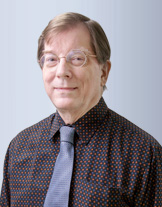| 侵權訴訟探討 | ||||||||||||||||||||||||||||||||||||||||||||||
| 第一個美國專利多方複審案例評析 | ||||||||||||||||||||||||||||||||||||||||||||||
|
||||||||||||||||||||||||||||||||||||||||||||||
|
||||||||||||||||||||||||||||||||||||||||||||||
根據美國AIA《Leahy-Smith美國發明法案》,一個新的「迷你審判」程序被制定出來取代舊有的多方再審查制度(inter-partes reexaminations),這個新程序也就是多方複審制度(Inter Partes Review; IPR) ,第一個使用這項新制度的案子已經做出複審決定,而使美國專利號US 6,778,074於複審後,縮減了三個請求項。 此一被複審的專利為Cuozzo Speed Tech公司所擁有,而訴願人是Garmin公司。這個專利是關於一個利用GPS系統的速限指示裝置,該裝置在車輛行駛超過速限時,會發出一個訊號給駕駛。對於此專利其他存留的有效請求項,仍有另一個多方複審(IPR)程序在進行中。還有,兩造在紐澤西的聯邦地方法院進行的原始訴訟,其專利範圍建構聽證程序也已暫停,以等待此多方複審的審定結果出爐,然後接續進行。 該US 6,778,074專利是於2000年申請的,在未來一段時間內,跟幾乎所有其他的IPR案一樣,都仍適用舊法之規定,而AIA修法從先發明原則改成發明者先申請原則,此修法已在2013年3月16日生效。在申請的時候,Cuozzo先生是交給一個叫作Invention Submission Corporation (ISC)的發明推廣公司,來看看他的想法能否申請為專利。這意味著要先支付一筆可觀的費用後,ISC公司才會找專利律師在美國替其申請專利。而拖延付款的結果,Cuozzo先生發現Garmin公司有能力根據專利法102(e)(2)(註1)新穎性的規定去舉發掉他的專利,因為在他申請前該技術已經被公開了。 正是因為這個延遲付款的動作,Cuozzo先生必須提出證據來證明他的發明被發想出來且可據以實現,是在該先前技術之前。Cuozzo先生表示,之所以會有透過連結了GPS的測速器自動顯示速限的這個想法,是他在收到一張交通罰單時想到的,他也出示該交通罰單於法庭上,但法庭認為根據聯邦證據法跟相關的判例見解,只有發明人的證詞並不足夠,必需要有可證實其言為真的證據才行。而因為他延遲了對ISC公司的付款,他在將該發明從想法到據以實現的整個關鍵時程上,產生一個相同的問題,他並沒有能力去提出其於此關鍵時程上有履行「合理的注意義務」(reasonable diligence)。Cuozzo先生雖安排從他的父母為他設立的基金去付款給ISC公司,但專利審判暨上訴委員會(Patent Trial and Appeal Board;PTAB)認為「為商業發展目的而進行籌資活動,並不算盡到應盡的注意義務」。 然後專利審判暨上訴委員會使用102(e)(2)條文規定,將一個先前技術與其他兩個先前技術的一部分結合,這在PTAB叫做「三連勝」(trifecta)組合 (此為一個賭馬的術語,下注挑選三匹馬與其席次,比賽結果全部相符即贏得賭注),加上其他的先前技術組合,特別包括一個含有4個先前技術部分的組合,去核駁本專利三個請求項都屬於顯而易見的(譯註:即不具備進步性)。這樣複雜與零碎的進步性爭論,通常並不會被地方法院所接受。如此可以顯示出選擇PTAB進行審理在決定可專利性上能有顯著差異嗎?對於不幸的Cuozzo先生來說,如果一開始他就簡單的去找一個適任的專利律師來申請專利,就根本不會有任何問題了。雖然ISC公司根據《反勒索及受賄組織法》(RICO)已經被勒令關閉,但很顯然的該公司又換了一個名子叫作InventHelp繼續經營。所以從這個個案裡我們可以學到,發明人在申請專利時,應該仔細的選擇一個好的專利代理人/律師,而不要找所謂發明推廣公司(Invention Promotion company)或者與其有關的專利代理人/律師。
The first filed Inter Partes Review (IPR)
The first filed Inter Partes Review (IPR-2012-00001), the new “mini-trial” procedure created under the US AIA (America Invents Act) to replace the old inter-partes reexaminations, has been decided, and the patent that was reviewed has lost three claims. The patent at issue is 6,778,074 of Cuozzo Speed Tech and the petitioner was Garmin. This patent describes a speed-limit indicator tied to a GPS system that provides a signal to the driver when the car is moving faster than the speed-limit. There are other valid claims still alive in the patent, and another IPR remains pending, as does the original litigation in Federal District Court in New Jersey, where the claim construction hearings were stalled awaiting the outcome of this IPR. The original patent was filed in 2000, and like virtually all the IPRs for some time to come will be decided on the US Patent Law prior to the AIA changes from First-To-Invent to First-Inventor-To-File Systems, which occurred on March 16 of this year. At the time of filing, Mr. Cuozzo used an Invention Promotion company called Invention Submission Corporation (ISC) to see if his idea could be turned into a patent. This meant that only after being paid a considerable sum of money would ISC find a patent attorney to file the patent at the USPTO. As a result of the delay, Mr. Cuozzo found that Garmin was able to challenge his patent with intervening 102(e)(2) 1 prior art that was published before his filing date. It was because of this delay that Mr. Cuozzo had to show that his invention was conceived and reduced to practice before the intervening 102(e)(2) prior art. Mr. Cuozzo said he conceived of his GPS connected speedometer to automatically show speed limits when he got a traffic ticket, the stub of which he showed the court, but of course that failed, as under the Federal Rules of Evidence and related case-law pertaining to conception, an inventor’s word is just not enough; one needs corroborating evidence. He had the same problem with his reduction to practice, as because he delayed payment to ISC, he was not able to show “reasonable diligence” for the entire critical period from his conception to his reduction to practice. Mr. Cuozzo had to arrange to get the money to pay ISC from a trust set up for him by his parents, and the PTAB considered this “fund raising for purposes of commercial development, which does not constitute qualifying activity for diligence.” The Patent Trial and Appeal Board then used each 102(e)(2) prior art, one combined with two other pieces of prior art, in what the PTAB called a “trifecta” (a betting term meaning that each of three picked horses either places, shows or won the race) and the other in a combination including a notable four pieces of prior art, to decide that the three claims at issue were obvious. Such complex factual obviousness arguments are not commonly accepted by District Courts; could this indicate a notable difference in choosing the PTAB as a forum to decide on patentability issues? Unfortunately for Mr. Cuozzo, it seems that if he had simply used a competent Patent Attorney in the first place, he wouldn’t have had any problems. Though the Invention Submission Corporation has been shut down under the Racketeer Influenced and Corrupt Organizations Act (RICO), it is apparently rearing its ugly head again under another name, InventHelp. Therefore a salutary lesson from this specific case is that an inventor should choose carefully who to use as a Patent Agent/Attorney and not use an Invention Promotion Company or Patent Agents/Attorneys associated with them.
|
||||||||||||||||||||||||||||||||||||||||||||||








